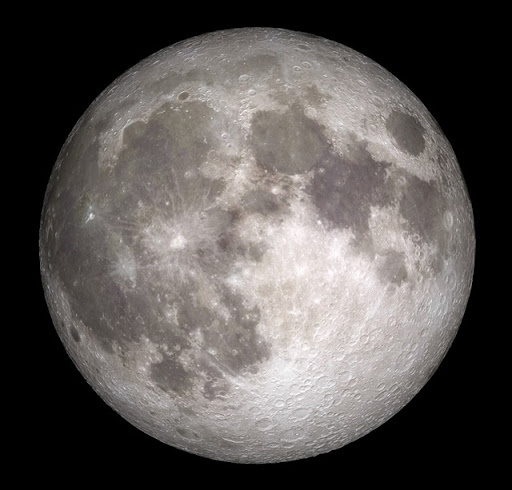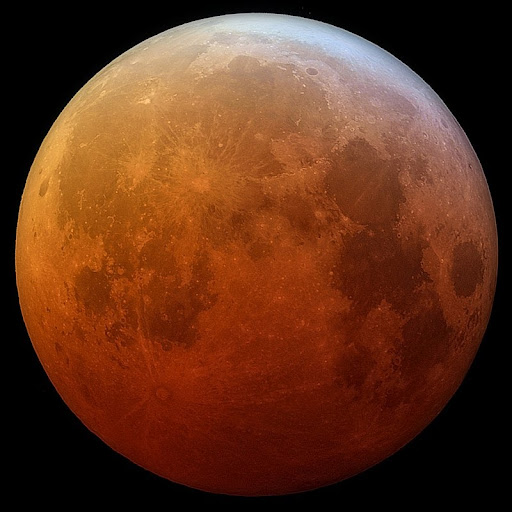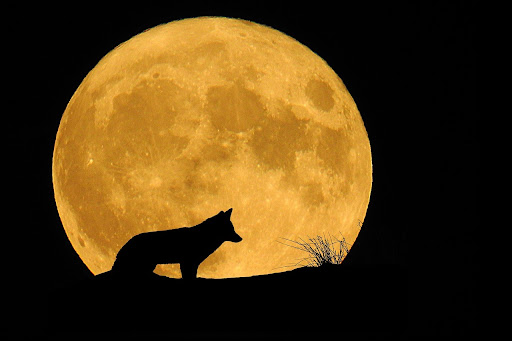The Moon’s True Colors: It’s Complicated
At first glance, the moon might seem to be a simple, silvery-white celestial body. But if you look closer, you’ll find there’s more to it than meets the eye.
First off, it’s essential to know that the moon doesn’t emit its own light. Instead, it reflects light from the sun.
Up close, the moon’s surface is mostly grey like worn asphalt pavement, but that’s not the whole story.
If you’ve ever witnessed a lunar eclipse, you might have noticed that the moon can take on a reddish hue.
And what about those mysterious dark spots that adorn the moon’s face?
It turns out that the moon’s appearance is influenced by several factors, including the types of rocks on its surface and the Earth’s atmosphere.
So, let’s start by exploring the fascinating world of lunar geology and find out what kinds of rocks are on the moon.
What Rocks are on the Moon?
Believe it or not, the moon is home to a diverse range of rocks. The four main types are mare basalts, breccias, anorthosites, and regolith.
Each of these rocks contributes to the moon’s overall appearance.
Mare Basalts
Mare basalts are dark, iron-rich volcanic rocks that make up the large, flat plains on the moon’s surface. They’re responsible for the darker areas that we see when we gaze up at the moon. Formed through volcanic activity more than 3 billion years ago, mare basalts give the moon its characteristic grey color.
Breccias
Breccias are fascinating rocks composed of fragments of other rocks that have been welded together by the intense heat and pressure of meteorite impacts. These rocks are found in the highlands of the moon and can vary in color from light to dark grey, depending on the composition of the rock fragments they contain.
Anorthosites
Anorthosites are lighter-colored rocks that form the moon’s highlands. They’re made primarily of a mineral called plagioclase feldspar, which has a white or light grey color. These rocks are the oldest on the moon, with some dating back as far as 4.5 billion years.
Regolith
Last but not least, there’s regolith. This is a layer of loose, fragmented material that covers the solid bedrock of the moon’s surface. Regolith is composed of a mix of fine dust, small rocks, and larger boulders, all of which have been shattered and ground up by eons of meteorite impacts. Regolith can range in color from light grey to almost black, depending on its composition.
What are the Dark Spots on the Moon?
Now that we know about the different types of rocks on the moon, let’s dive into one of its most striking features: the dark spots, or “mare.”

These large, flat plains are the remnants of ancient volcanic activity and are primarily composed of the aforementioned mare basalts. The dark color of these rocks gives the moon its distinctive pattern of light and dark areas.
When you gaze up at the moon, you might notice that these dark spots often form shapes that resemble a face. This phenomenon is known as the “Man in the Moon,” and it’s the result of our brains’ natural tendency to find patterns and familiar shapes in random arrangements. Throughout history, people have looked up at the moon and imagined various figures, from a rabbit to a woman carrying a bundle of sticks.
What Color Is the Moon?
So, with all this information, what color is the moon, really? As mentioned earlier, the moon’s surface is mostly grey like worn asphalt pavement.
However, its appearance can change depending on where it is in the sky and the particles in the Earth’s atmosphere.
Why Does the Moon Appear Red?
A red or orange colored moon usually indicates a moon seen near the horizon.

When the moon is low in the sky, its light has to travel through a greater amount of Earth’s atmosphere before reaching our eyes. The atmosphere scatters shorter-wavelength (blue) light more efficiently than longer-wavelength (red) light, causing the moon to appear reddish or yellowish.
This effect is particularly pronounced when the atmosphere is laden with fine dust, such as during a volcanic eruption or a dust storm.
Why Does the Moon Appear Yellow?
Similar to the red moon phenomenon, a yellow moon occurs when the moon is close to the horizon and its light has to travel through a more extended section of the Earth’s atmosphere.

However, the yellow color is generally less intense than a red moon and can be seen more frequently.
The Rare Blue Moon
A blue-colored moon is quite rare and can indicate a moon seen through an atmosphere carrying larger dust particles.
These particles scatter red light more than blue light, giving the moon a bluish tint.
One example of a blue moon occurred in 1950 after a massive forest fire in Canada, which released large amounts of smoke and particles into the atmosphere.
This entirely different to a “Blue Moon” which is when there are two full moons in a calendar month.
The Ever-Changing Colors of the Moon
So, in summary, the moon’s color can be quite complex and variable. Its surface is primarily grey due to the various types of rocks present, but its appearance in the sky can range from silver-white to yellow, red, and even blue, depending on the position of the moon and the composition of the Earth’s atmosphere.
The next time you find yourself gazing up at the moon, take a moment to appreciate the intricate dance of light, geology, and atmosphere that creates the beautiful and mysterious colors of our closest celestial neighbor.
For more fascinating information about the moon and other celestial bodies, be sure to check out these resources:
These resources offer a wealth of knowledge on the inner workings and characteristics of the Earth, the moon, and other celestial bodies in our solar system.
From the science behind lunar eclipses to the geological features of the moon’s surface, you’ll find a treasure trove of information to satisfy your curiosity and deepen your appreciation for the wonders of the cosmos.
So, the next time you find yourself pondering the color of the moon or admiring its ever-changing hues, remember that it’s not just a simple question with a single answer.
The moon’s color is a beautiful testament to the complexities of the universe, and the awe-inspiring dance of light, matter, and atmosphere that shapes our perception of the world around us.